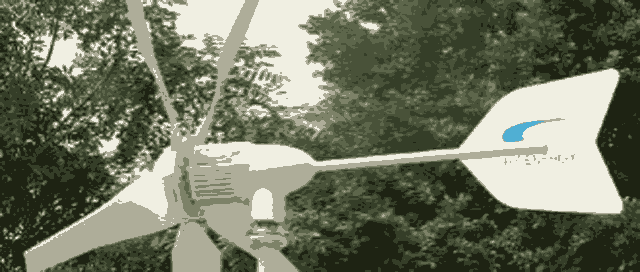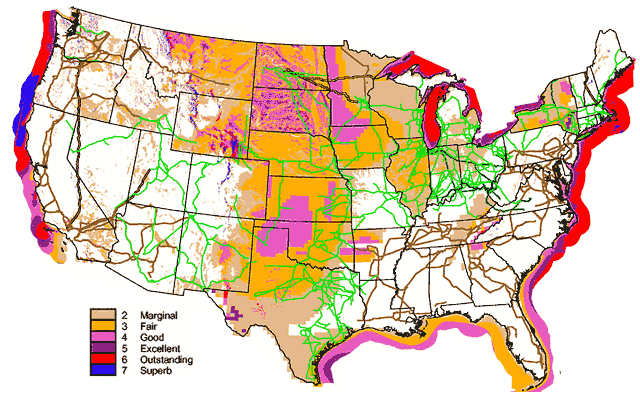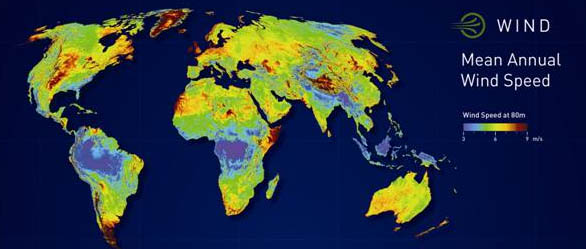Wind Power for your House, Home, Retreat

Wind power may be a good choice (for some), when considering alternative energy sources for either emergency preparedness or simply part-time power.
Some parts of the country (world) are much windier than others, with steady breezes just waiting to be harnessed.
Geographical location is important while attempting to harness wind power, especially the locations that often experience more wind.
For example, those who live along the ocean, breezy conditions are often part of daily life. Much of the open plains, or locations where winds are funneled through valleys are also often windy.
The following map of the United States shows favorable locations for wind power generation.
The following map of the United States shows average wind speeds (at a height of 80 meters), which is the common hub height of the ginormous wind generators (turbines) of wind farms that you may have seen along the landscape.
(Link no longer available)
Global Wind Power Map
How does a wind turbine work?
Incoming winds brush past the curved edges of the propeller, turning it as they go. The turning propeller rod connected to a gearbox translates a slow but high-torque turning motion into a very fast but low-torque motion which is connected to a generator, generating a continuous electrical charge.
The more you can do to become LESS dependent upon the power grid, the better.
It’s ‘risk insurance’.
Example:
ALEKO 450 Watt 12 Volt Wind Turbine Residential Wind Generator
If any of you have experience with a wind generator, I would be curious to know what you have – and your overall satisfaction with the results. I don’t have one (I don’t live in an area with much ‘constant’ wind), but I’m still curious nonetheless.


